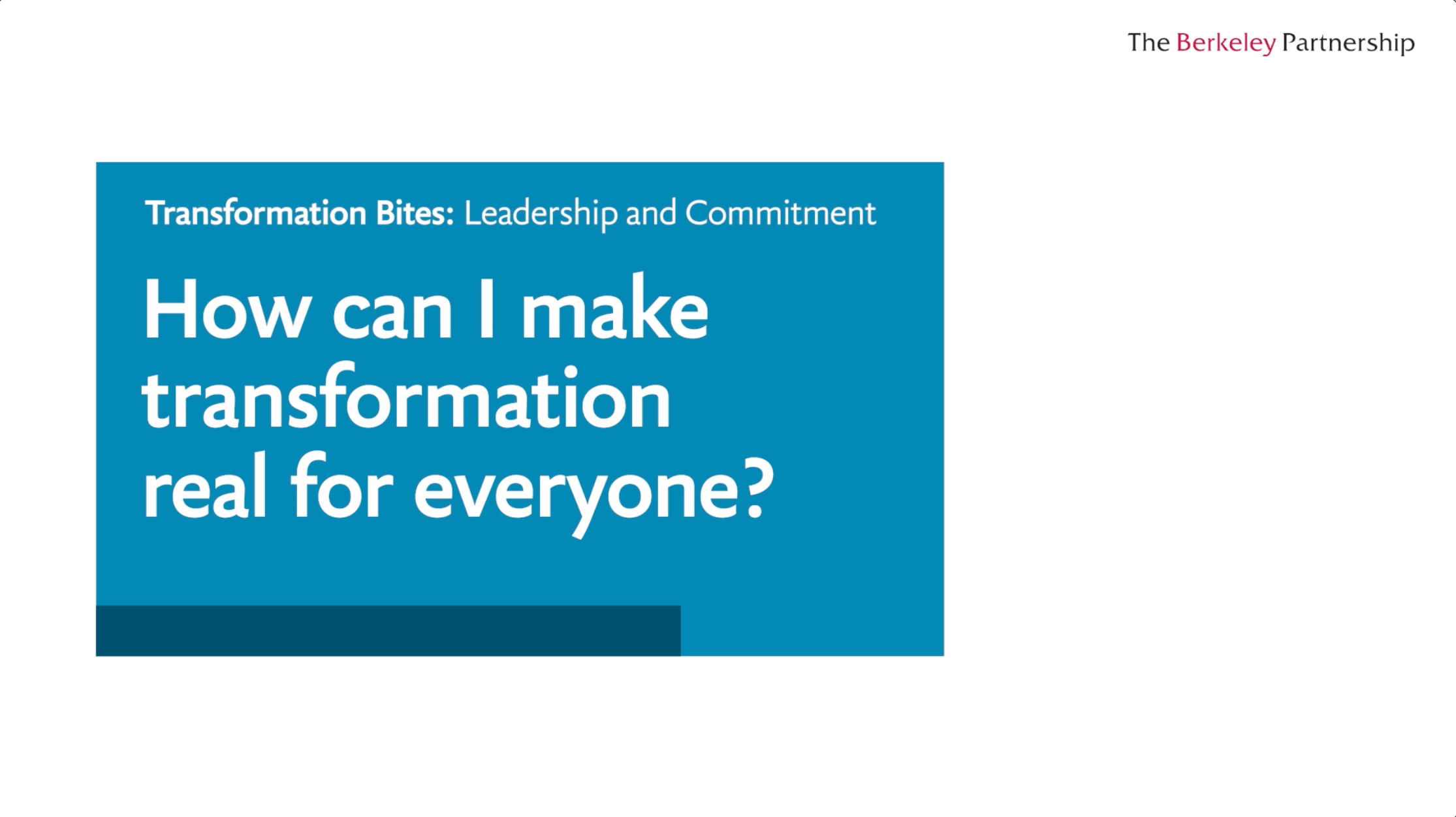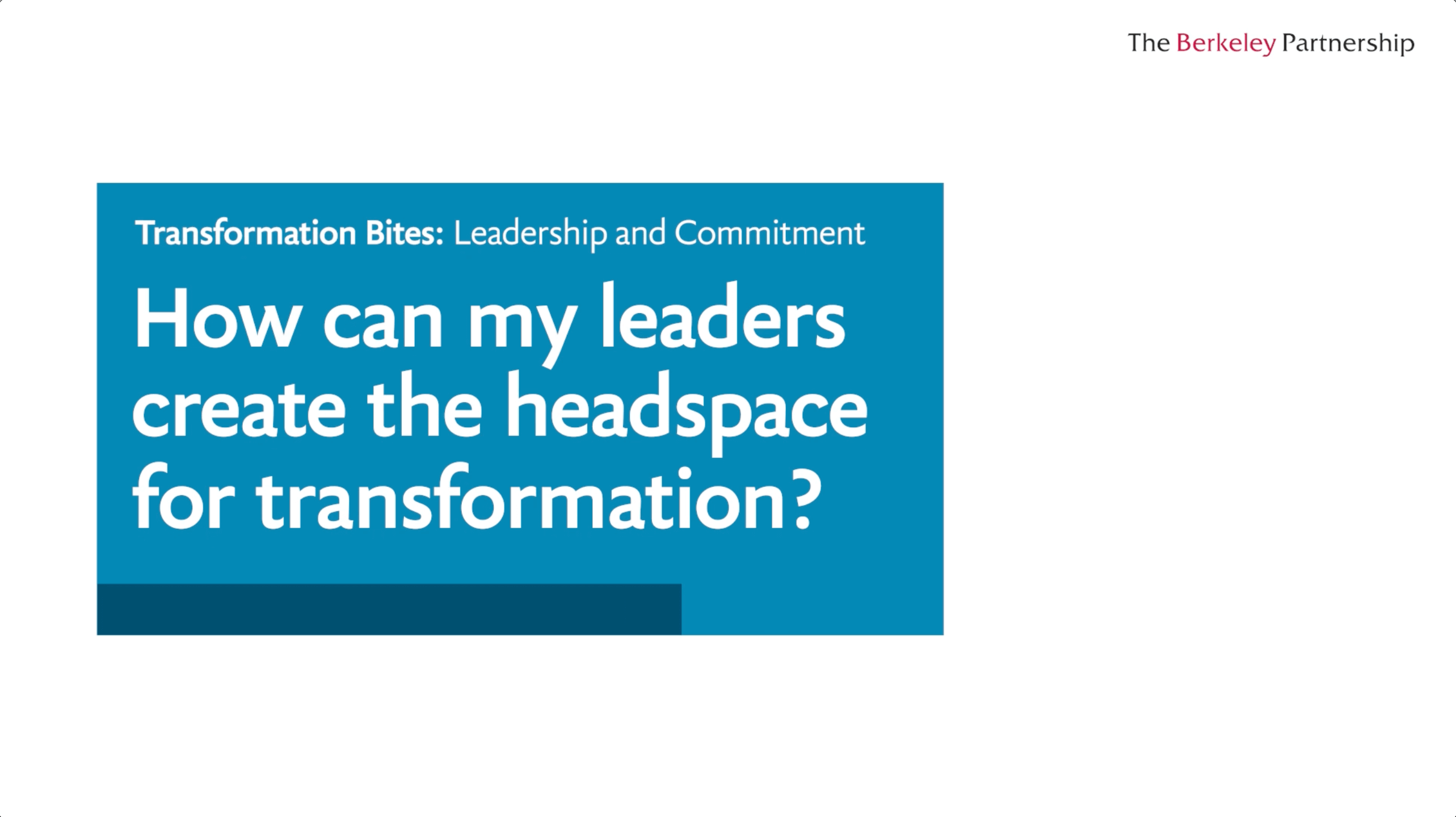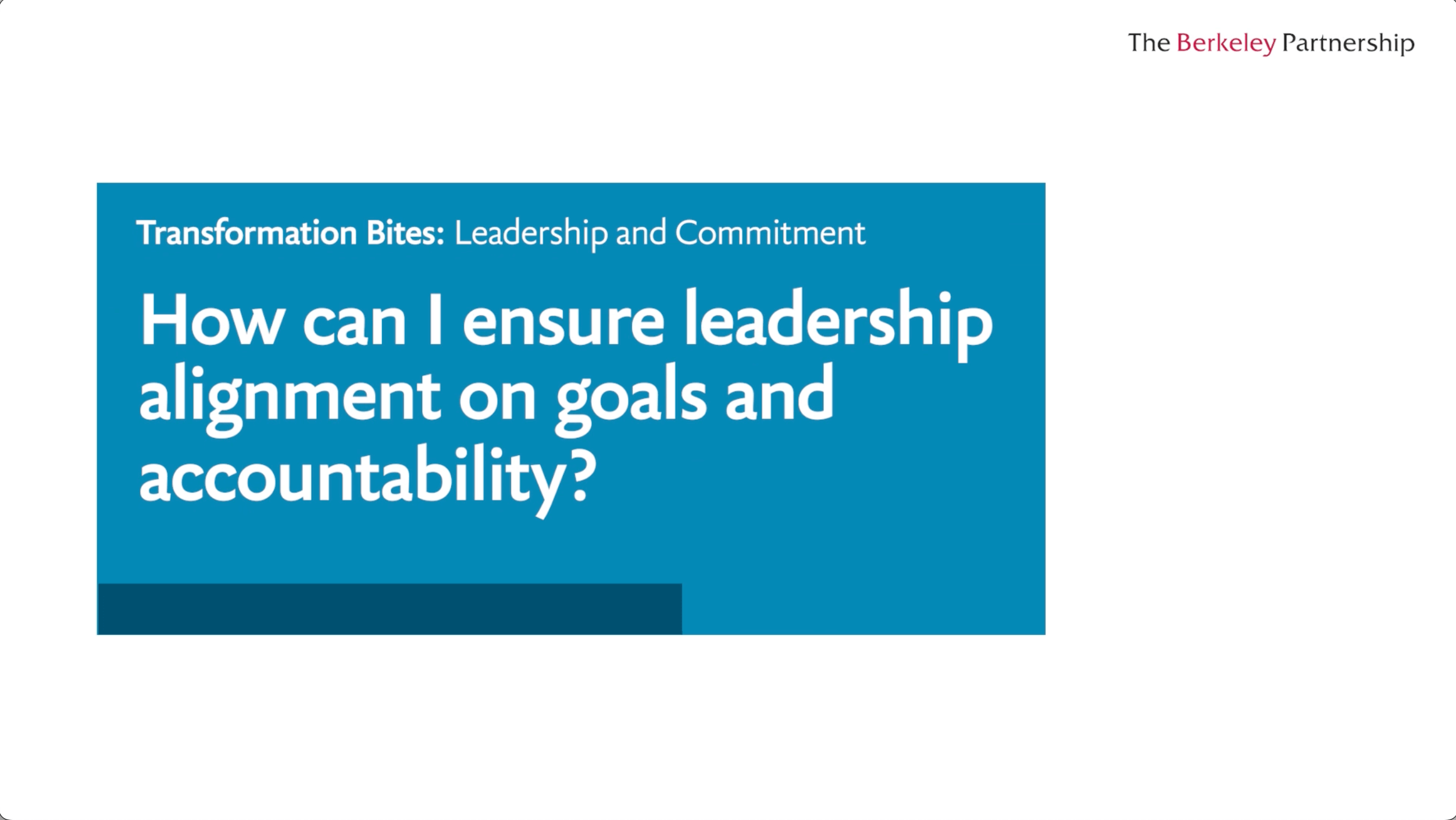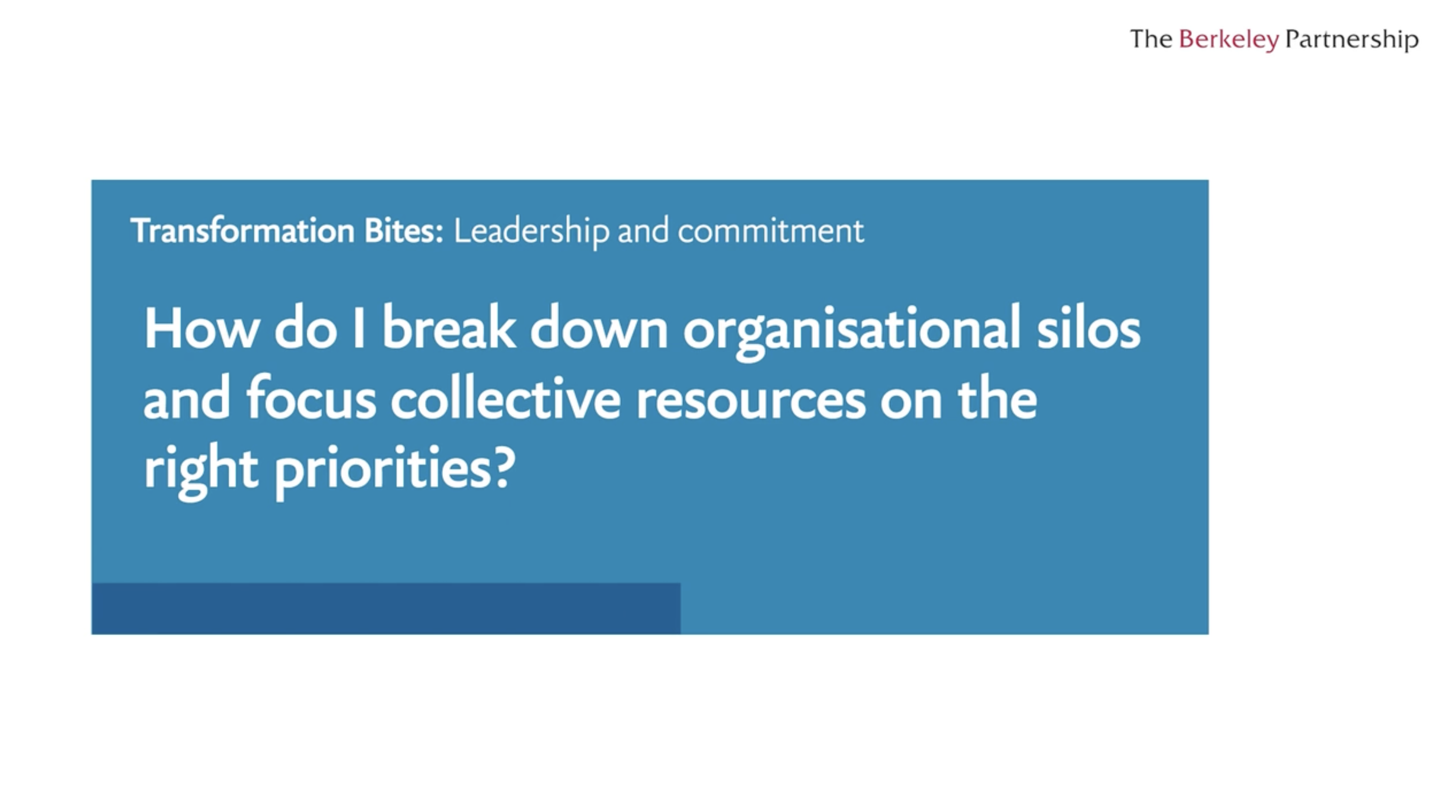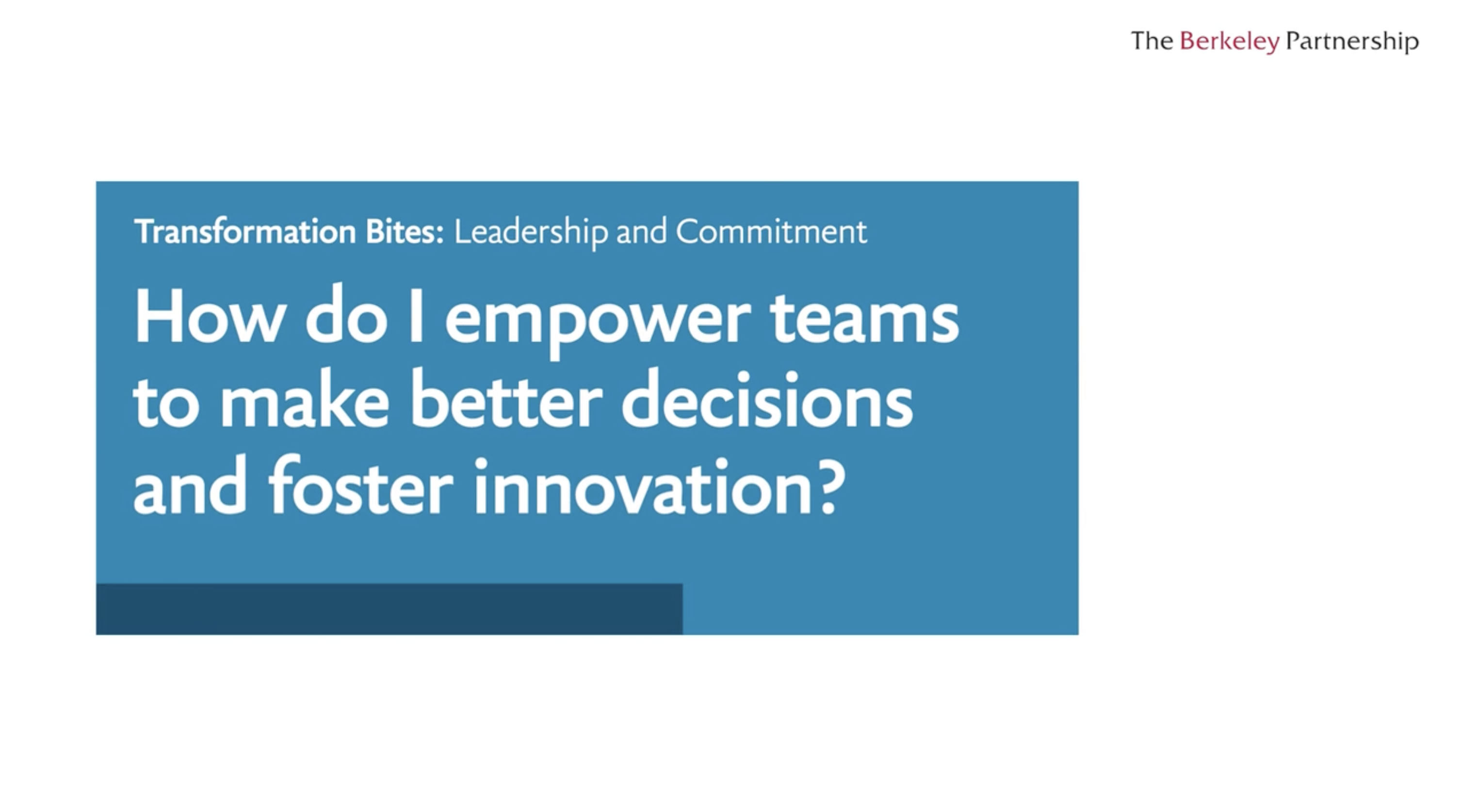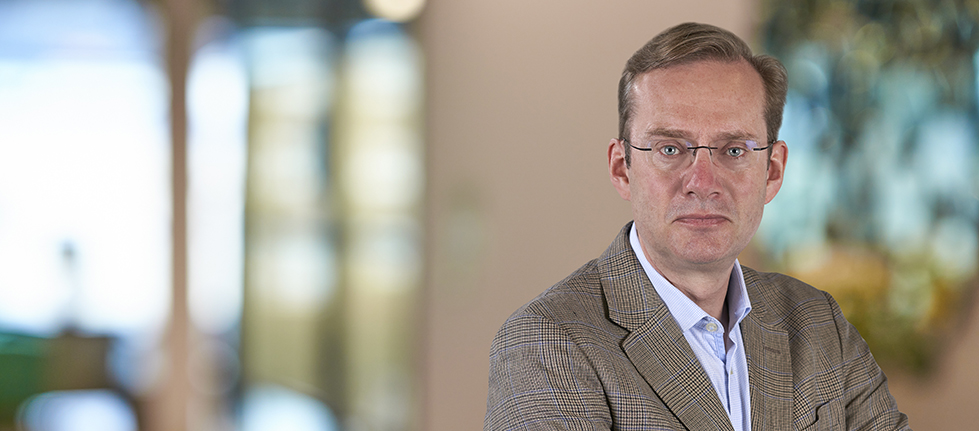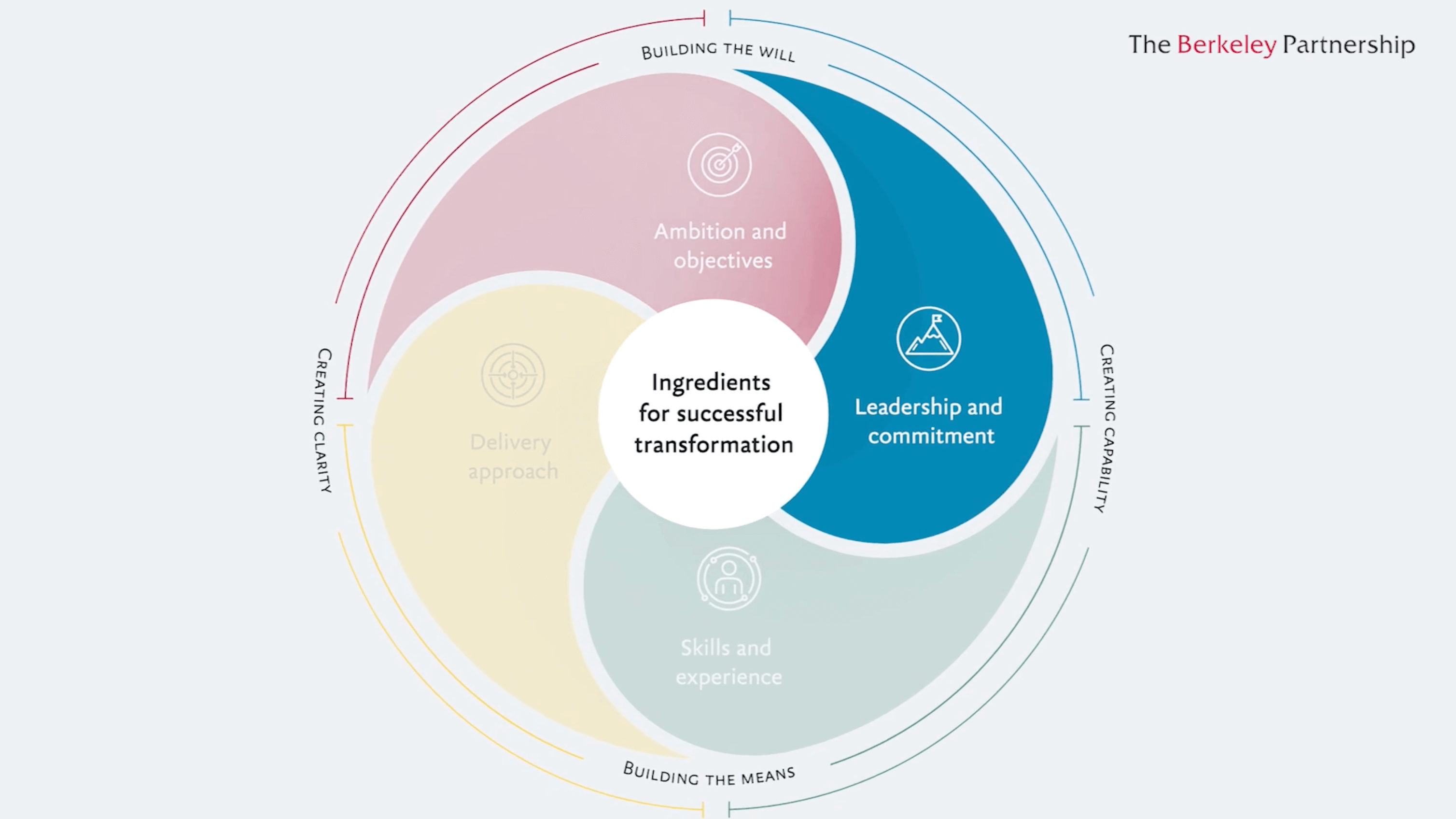
Simon: Most people would recognise that leadership is key in the success of an organisation's transformation. It seems obvious. So why is it so often overlooked? Well, firstly, building leadership and commitment is hard. People don't appreciate just how much dedicated time and effort it takes. Also, it's the least tangible element of transformation so it's hard to know if you've got it right.
Vicki: Secondly, leaders are often unclear on what's expected of them or not used to delivering a transformation. Transformation requires a different type of leadership. Breaking down organisational silos, overcoming resistance to change, helping people deal with ambiguity and uncertainty, and the list goes on. And some leaders aren't clear on how to do this and feel that asking for help is a weakness.
Simon: And finally beyond this, there are many factors at play that can dissuade individual leaders from truly throwing their weight behind the transformation. For example, enormous business as usual demands, different departmental priorities, and sometimes a member of the leadership doesn't really believe in the transformation. So, given it can be so hard, what can you do about it? The first and the most important point is to consciously invest that time and effort in building a genuine commitment to the transformation. To do this, involve as many of your leaders as you can in shaping the transformation. Don't view this as a one-off event. Building genuine understanding and ownership will require ongoing effort.
Vicki: Secondly, invest in developing all of your leaders, not just the senior leadership team. Not all leaders will have been through a big transformation before, so it's important they are clear on what to do, how to do it, and the behaviours that they need to role model. Thirdly, actively face into the difficult discussions that need to take place. Ask yourself: ‘Do we have the right people in leadership positions? Do we have the level of leadership commitment we need? Are we providing sufficient clarity of direction to our people?’
Simon: And if the answer to any of these and other difficult leadership questions is ‘no’, and in many cases it will be, don't shy away from them. Because if you can get this right, delivering your transformation will become so much easier.


